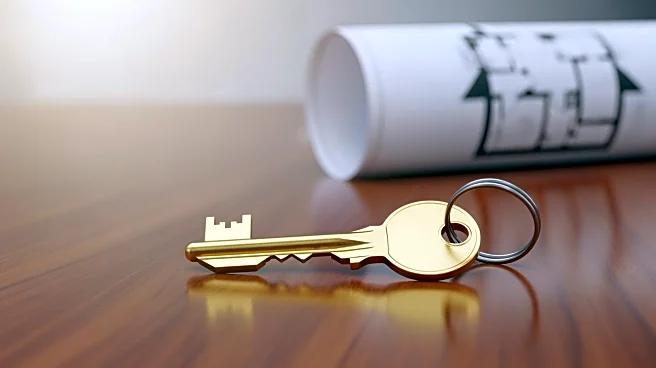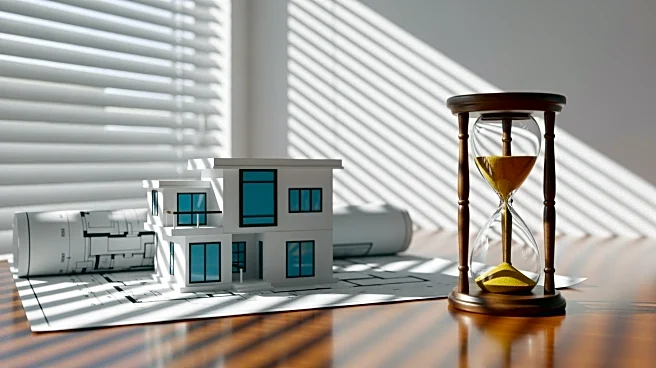What's Happening?
Foreclosures in the U.S. have surged by 20% year-over-year in October, according to ATTOM. The data shows 36,766 properties with foreclosure filings, marking the eighth consecutive month of annual increases. President Trump has proposed 50-year mortgages
as a solution to the housing affordability crisis. While foreclosures remain below historic highs, homeowners face challenges due to high mortgage rates, consumer debt, and a weakening job market. The proposal for 50-year mortgages aims to reduce monthly payments but may increase long-term costs and slow equity gains.
Why It's Important?
The rise in foreclosures highlights ongoing challenges in the housing market, affecting homeowners and the broader economy. President Trump's proposal for 50-year mortgages could reshape mortgage lending practices, potentially easing monthly payment burdens but increasing overall costs. The situation underscores the need for effective housing policies to address affordability and support homeowners facing financial difficulties. The proposal's impact on the housing market and economic stability will be closely watched by stakeholders.
What's Next?
The proposal for 50-year mortgages may prompt discussions among policymakers and industry leaders about its feasibility and potential impact on the housing market. Stakeholders may explore alternative solutions to address housing affordability, such as promoting homebuilding and reversing tariff-induced inflation. Monitoring foreclosure trends and economic indicators will be crucial to assess the proposal's effectiveness and address underlying challenges.
Beyond the Headlines
The proposal for 50-year mortgages raises ethical considerations about long-term financial implications for homeowners and the potential impact on generational wealth. The situation may lead to shifts in mortgage lending practices and housing market dynamics.













